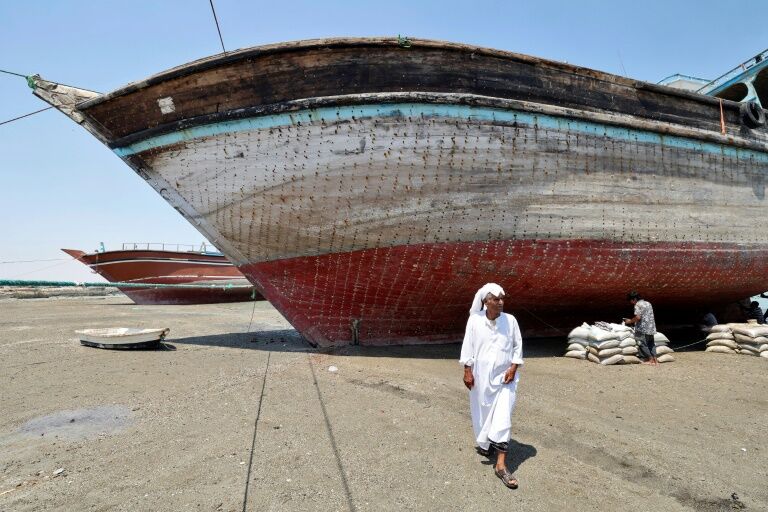Iran’s traditional wooden lenj boats face extinction as modern vessels take over

Hassan Rostam, a 62 years old Iranian captain, has navigated the Strait of Hormuz aboard his traditional wooden lenj for four decades. However, he sadly witnesses these hand-built vessels being replaced by more economical, faster boats. Lenjes have sailed Gulf waters for centuries, their unique form reflecting regional maritime customs similar to the dhows of the Arabian Peninsula.
Rostam, who has spent his life journeying between Iran and the United Arab Emirates, claims that there are increasingly fewer lenjes. The island of Qeshm off Bandar Abbas is also home to an ancient tradition of constructing wooden boats. Around 30 of these boats rested at low tide in the coastal village of Guran. The small port has historically housed several specialised shipyards for their maintenance and repair.
On a recent morning, fewer than 24 workers could be found at the shipyards, working barefoot in the mud. A half-constructed lenj hull has been left unfinished due to a lack of funds. Instead, its owner plans to dismantle it and repurpose the boards for other projects. Nowadays, a new lenj is quite expensive, as the wood is imported and the construction process is entirely hand-made, explained Ali Pouzan, who supervises the Guran site.
Each lenj is distinct, and their sizes vary, with these shipbuilding skills being passed down through generations. In 2011, UNESCO recognised the lenj as an intangible cultural heritage requiring urgent preservation. The modernisation of maritime transportation has caused the traditions, rituals, and specialised knowledge associated with Persian Gulf navigation to gradually decline, the UN body warned.
In their heyday, these lenjes were primarily employed to transport goods such as cereals, dried fish, spices, wood, and textiles across the Gulf and as far as the shores of East Africa and the Indian subcontinent. However, commercial shipping has been overtaken by engine-powered fibreglass or steel boats, which share the waters with enormous oil tankers. Lenjes were also utilised for fishing and pearling, both of which have nearly vanished entirely.
Younes, a 42 years old Guran resident, has repaired lenjes in his home village for over 20 years. He refers to the work as “painful,” using an old technique known as “kalfat koobi” to waterproof a ship with strips of cotton soaked in sesame and coconut oil. Pouzan acknowledges the decline of shipbuilding in Guran and is instead focusing on the growing tourism sector in Qeshm, which attracts an increasing number of visitors. Several boats have been restored and adapted for sea trips.
An old ship is being converted into a cafe, and there are plans to transform the picturesque port, with its colourful lenj hulls lying in the sand, into an open-air museum. Furthermore, Pouzan intends to build lenj-inspired huts for tourists near the beach’s mangroves. Each will be named after the most famous destinations the ships once reached, including Zanzibar, Mombasa, and Kolkata, reports Bangkok Post.
Latest Thailand News
Follow The Thaiger on Google News:


























